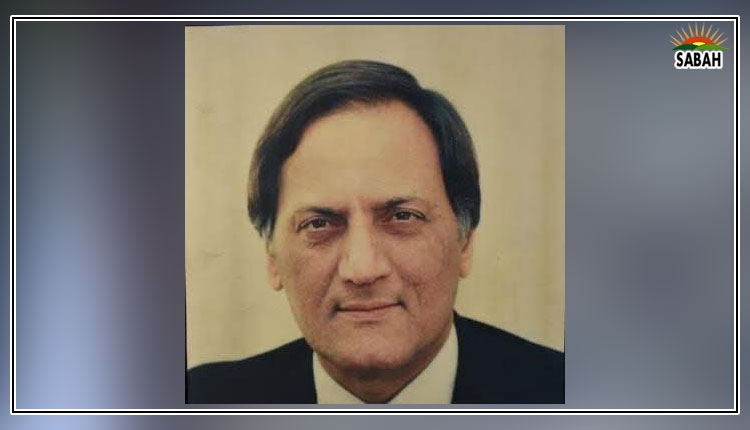The end of obesity?…… Rafia Zakaria
IF you have been on TikTok over the past several months, then you probably already know this. Some time ago, certain drugs containing the active ingredient semaglutide were approved for use by the Food and Drug Administration in the United States. The first drug had been given the go-ahead to treat Type-2 diabetes. Before long, however, drugs specifically for weight loss were introduced in the US market, with some recently approved for use in Europe as well.
These new drugs have caused a huge buzz in the billion-dollar global weight loss and wellness industry. Studies that have been released apparently show that the drugs are not only safe to use but can help in weight loss in most individuals. The mechanism used by the drugs is twofold. It works so that taking the medicine causes patients to feel full sooner after consuming much smaller amounts of food than usual. It does this in part by altering the speed at which the stomach empties its contents. The other mechanism has to do with insulin production such that weight loss is made easier. Patients are encouraged to work out and eat healthy foods.
The drugs popularity on social media should now make sense. Around a year or so ago, people began to document their journey taking these drugs. Even those who did not appear to work out or follow strict diet regimens appeared to lose weight, at an average of about three to four kilogramsa month. A few months ago, some negative publicity emerged around one of the drugs when the hashtag #ozempicface began to trend. It referred to women who appeared old after taking the drug concerned because they now had a lot of loose skin on their faces. It doesnt appear that the hashtag caused much negative backlash as the drug is on backorder in many US pharmacies. The other drugs face similar shortages although some pharmaceuticals have ramped up production to meet the high demand for drugs that appear to promise an end to obesity.
Manufacturers and even those showcasing their weight loss journeys on social media emphasise that the new medications are not miracle drugs. The starting dosage is usually a quarter of the actual therapeutic dose and is administered this way so that patients can get used to the medication. Some do not see weight loss until the dose is increased but most seem to see significant amounts of weight loss over time. The ones with the most to lose end up having a lot of flabby skin which inevitably requires surgery and removal.
A new class of drugs has caused a huge buzz in the billion-dollar global wellness industry.
There are side effects. Those who take this class of the approved drugs complain that they cannot eat much even if they want to. Consuming deep-fried and greasy, high-fat foods can cause diarrhoea and stomach cramps. Some people experience constipation; others have intense bouts of nausea. Another downside is that in order to maintain the weight loss they have to continue using these drugs. Most end up being on a small maintenance dose which allows them to keep the weight loss benefit that has resulted.
A lot of caveats have to do with their cost and availability. The out-of-pocket cost for a months dosage is almost $2,000. Some discounts can cut the price to around $1,600. For those covered by private health insurance, the drugs can cost nothing. Others can require significant copays; or the drugs may not be approved for use for patients who do not have diabetes. Many traditional weight loss doctors are also wary of prescribing them because of their stakes in other weight-loss regimens. Those advocating for specific diets like keto are facing huge financial costs if the drugs continue to have the success that they currently seem to be having. The drugs do not require a huge change in normal eating habits but it is proposed that drug users have a balanced diet instead of the heavy fat regimens promoted by keto. Also the fat-positive community that wants to destigmatise being fat is sceptical of the drugs, because taking it is an admission that being fat is something that has to be cured or changed.
As fast foods, with a high fat content, become popular around the world, they contribute to the prevalence of obesity. One explanation offered by doctors for obesity in South Asia has its roots in the British colonial era where those exposed to famines are believed to have developed a predisposition towards storing food inside the body, instead of burning it. This predisposition appears as a high incidence of diabetes, suggesting that certain drugs, approved by health and medicine authorities, can be effective in reducing obesity and controlling diabetes in South Asia.
That is, of course, when the drugs are cheap enough to make their way to South Asia. Promises by drug manufacturers to make the drugs easily available do not mention that big pharmaceuticals do not stand to make enormous profits from the sale of such drugs. This also means that they are likely to contest all efforts to produce generic versions of the drugs that could be available for lower cost in the Global South.
Even so, the drugs may be a ray of hope for people who have tried all kinds of diets and other traditional methods of weight loss and have ended up unsuccessful. This group, which has had a rough lifetime of diets, pills, eliminating carbs then eliminating fats and have tried numerous other tricks, can finally avail of something that is said to be working once the drugs are easily available, are moderately priced and the drug regulation authorities have approved them for local use, subject, of course, to the doctors prescription. This may just be the progress in science that these people have been waiting for.
The writer is an attorney teaching constitutional law and political philosophy.
rafia.zakaria@gmail.com
Courtesy Dawn, August 2nd, 2023












